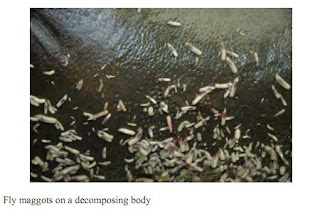Forensic
Pathology
Forensic
pathology represents a subspecialty within the medical specialty of pathology
dealing specifically with the investigation of sudden, unexpected, and/or
violent deaths. The autopsy is central to the practice of forensic pathology.
Forensic
Anthropology
Forensic
anthropology is a subspecialty within the scientific field of physical
anthropology (the study of human beings in relation to their physical
character); in which forensic anthropologists examine skeletal remains (bones).
Forensic anthropologists attempt to answer questions about bones, including
questions regarding species of origin (human versus nonhuman), gender, age,
race, stature, and nutritional status, existence of disease processes, and the
presence and character of skeletal trauma. A forensic pathologist may consult
with a forensic anthropologist when attempting to address any of the questions
above. A frequent instance of consultation occurs when the forensic pathologist
is presented with a badly decomposed or skeletonized corpse that is unidentified
Forensic
Entomology
Forensic
entomology is a subspecialty within the biological science discipline of
entomology (the study of insects) that primarily deals with insect succession
patterns in decomposing human bodies. Evaluation of insects (including larval
stages, or maggots) found on decomposing bodies can permit scientific estimation
of the time of death .In certain circumstances; information regarding the
location of death may also be ascertained. Forensic pathologists do not consult
with forensic entomologists in all decomposed cases, but will consult with them
on select cases where estimating the time of death may be very important (for
example, in homicides with decomposition and insect activity).
Forensic
toxicology is a discipline that involves the identification and quantification of
drugs and other poisons or toxins in body tissues, including blood. “Screening tests”
are said to be “qualitative,” where a test is either positive (indicating that the
drug/toxin is present) or negative (indicating that the drug/toxin is not
present).
When
specific levels of drugs or toxins are determined, the tests are said to be “quantitative.”
For a result to have forensic significance, two separate methodologies are
required, an initial (screening) test, and a confirmatory (quantitative) test.
Another function of some toxicology laboratories is drug identification. For example,
if a bag of white powdery substance is found in the pocket of a dead person,
the substance can be submitted to the laboratory for identification. Forensic pathologists
rely a great deal on the forensic toxicology laboratory. In many jurisdictions,
toxicology testing is performed on a majority of the autopsy cases. In a significant
percentage of forensic autopsy cases, the cause of death is related to the
toxicology results.
Forensic
Psychiatry
Forensic
psychiatry represents a discipline dealing with the evaluation of the mental
state of criminals. Occasionally, forensic pathologists will interact with
forensic psychiatrists and police investigators to form a “psychiatric profile”
of a suspect in a particular murder or series of murders. A “psychological
autopsy” is sometimes necessary when attempting to determine the state of mind
of a suicide victim.



are there any legislative laws and policies enacting the practice of forensic psychiatry in Kenya?
ReplyDeleteare there any bodies that certify and accredit forensic psychiatrists in Kenya?
We are yet to establish one....
ReplyDelete